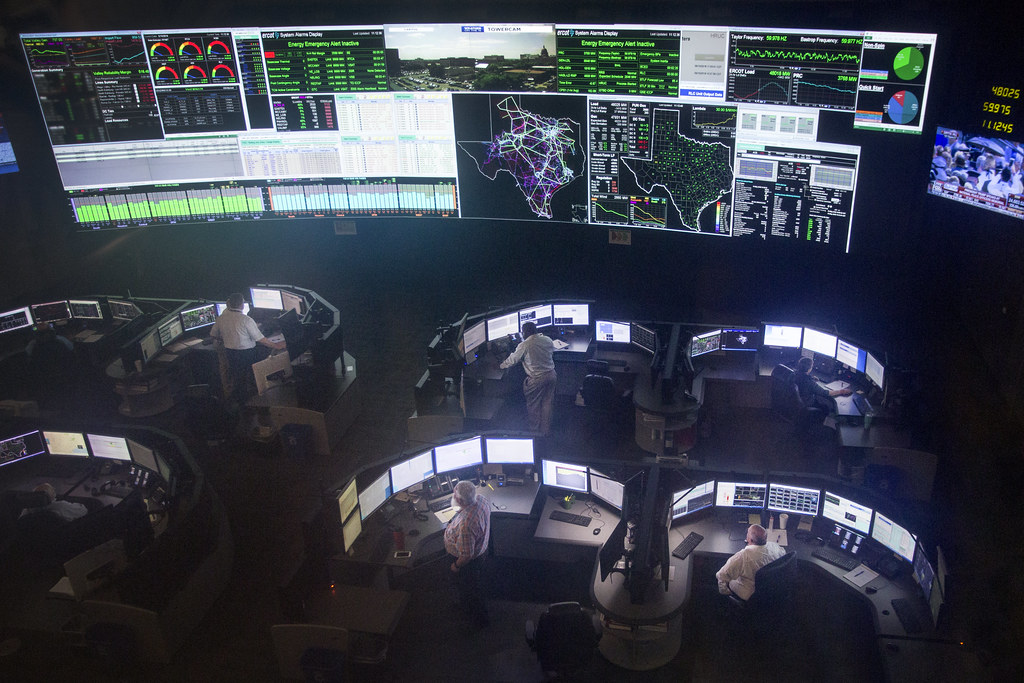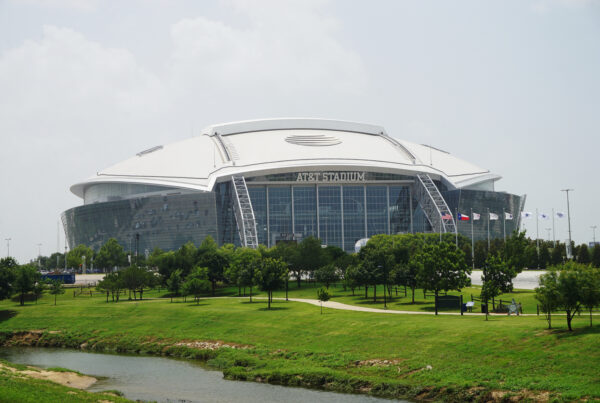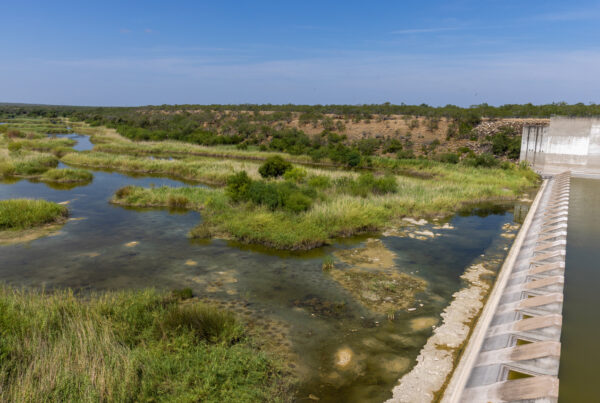The first major cold front of 2024 came and went without any major problems with the electric grid.
The grid that provides power to most of the state is operated by ERCOT, the Electric Reliability Council of Texas. The operator found itself in a lot of hot water back when the grid failed in 2021 during Winter Storm Uri.
Those power outages across the state caused way more than just headaches – they were linked to hundreds of deaths.
So while the fact that supply outlasted demand throughout last week’s arctic chill seems like a success story, many Texans remain skeptical that the same will remain true in future extreme weather situations.
But a plan has been quietly moving forward to connect the ERCOT grid to the one operating in the southeastern United States. Dallas Morning News watchdog columnist Dave Lieber reports that a decade-old project hasn’t gotten a lot of public attention, though.
Lieber spoke with Texas Standard about his findings. Listen to the interview above or read the transcript below.
This transcript has been edited lightly for clarity:
Texas Standard: Remind folks why connecting the ERCOT grid to the southeastern grid might be desirable.
Dave Lieber: Well, first of all, this really doesn’t connect directly to the ERCOT grid. So that’s how they get around avoiding federal regulators.
But when we have a disaster, we don’t really have any place to go because we’re not connected in a big way to the eastern or the western grids. So we’re like a lost soul. While the rest of the country can share power – move back and forth between states and help each other out – we’re at a loss to do that.
Why have we not done this?
When I research going back into the 30s, when they were setting up electric co-ops and such, they were adamantly back then against having any federal regulators in. And that has followed through decade after decade. They just don’t want anybody coming in and telling them what to do.
It’s another Texas thing. You know, classic Texas where we’re on our own and we don’t want to mess with anybody else and “leave us alone” kind of a deal.
» RELATED: Texas power plants have no responsibility to provide electricity in emergencies, judges rule
Let’s talk about the plan for connection. How would this work?
Well, so there’s this company called Pattern Energy that’s been working on this project for over a decade. The way they’re doing it is kind of ingenious. They have it set up that they’re going to be pushing direct current (DC) electricity, and then they’re going to switch it to alternating current (AC). And by switching it, that allows them to avoid federal regulators.
We should point out that AC is the power, like what comes out of the wall, I suppose you could say. DC, you’re not really plugging in any devices to DC, right?
That’s right, that’s right.
So what is the plan here? And why has it apparently stalled?
Yeah, it’s hard to tell because the company wouldn’t talk to me about this. I had to write the entire story off documents because human beings weren’t eager to return my calls.
But what they want to do is they want to go from the border of Texas into Louisiana, cross over Louisiana, and then go into Mississippi and do the hook up to Mississippi.
Why hasn’t this been done before if it would provide more supply for Texas?
My guess is that it’s really hard to get people in Louisiana to go along with allowing these giant electrical towers on their property. There’s at least one guy who’s traveling around Louisiana visiting the parishes at the equivalent of the city council meetings, and he’s begging them to give approval, and they’re just not doing it. They’re postponing it. They’re denying it. He’s not making any fans.
And so it’s a very slow process. And they’re even threatening eminent domain seizures in Louisiana. And so the parishes, you know, which are the same as counties in Texas, the parishes in Louisiana are not falling all over themselves to give approval to this – to go through their state, to get into Mississippi’s grid.
If there were these green lights along the way when it comes to being able to connect through Louisiana, how long would it take to get this up and running and how much extra power would it provide to Texas? Would this solve the issue for ERCOT?
No, it would only provide, they say, about 4% of what would be needed in a catastrophe. So that’s a few hundred thousand homes. But I guess that’s how you put it together – one piece at a time.
They say that if they could start in 2026, they could finish it by 2029.
Bottom line here, Dave, is this the solution that Texas needs, or would this just be a first step toward making other connections with other energy sources in other states?
Well, my personal opinion, you know, as an opinion columnist, is that this is very necessary. And I think we need to get over our “Texas: love it or leave it” mentality and really hook up to the rest of the grids and, hey, even let federal regulators come in and oversee the project. It just seems like that’s a normal way of doing this so that people have power.
But this is another example of Texas being stubborn and adhering to its old traditions of “leave us alone, we don’t need you, we’ll do it on our own.”
Some listeners are going to say Texas’ power structure is very much market-driven. The way that Texas regulators have structured this over the course of several decades is to create a kind of an energy marketplace that is managed by ERCOT and overseen by Texas regulators. And once you start to have other regulations into that marketplace, the market conditions change.
And the argument that people have made in Texas, people who want to preserve the independence of the power grid, is that Texans get lower prices. Is that not something that’s worth protecting?
Well, we’re in such desperate straits because remember: another 10 million people are expected to move here. And we’re basically hanging on by our fingernails with the 30 million people we have right now. So what are we doing to get ready for all these millions of more people that are coming here in the next decades?
I think the time has come to sort of grow up on this. And, you know, we’re supposed to have the lowest rates in electricity because we have this big power state and everything. But really, I don’t think we have the lowest rates in the country. And, you know, look at your electric bill – it’s high.
» RELATED: Why Texas is seeing historic growth in electricity demand
How does Texas compare with other states?
Well, I haven’t looked at the numbers lately, but they’ve always been making the claim that we have lower prices than everybody else. And I’m not sure that’s true.
Editor’s note: U.S. News & World Report ranks Texas #16 for electricity prices, Yahoo Finance ranked Texas #17.














